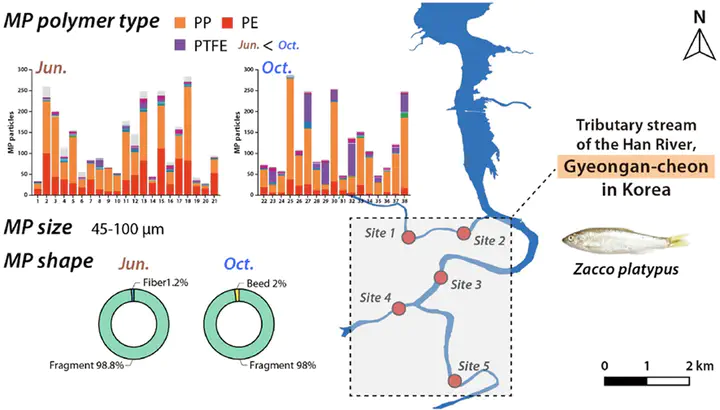Microplastic characterization in small freshwater fishes collected in Gyeongan-cheon, a tributary stream of Han River in South Korea: Ingestion and depuration study of Nylon

Abstract
Plastic inventions have had an impact on various industries, and people easily approach to plastic products, degrading into microplastic (MP). In this study, distribution of MP was evaluated in freshwater fishes collected in a tributary stream of the Han River, Gyeongan-cheon. Totally 38 fishes, mostly Zacco platypus, were used to analyze, and they were collected in two different seasons as the normal and rainy seasons. Fishes contained 34–284 particles/individual. The prevalent size of MP in fishes ranged from 45 to 100 μm, followed by 100–300 and 20–45 μm. Shapes of MP in fishes were mostly fragments, and types of MP were polypropylene (PP) > polyethylene (PE) > polytetrafluoroethylene (PTFE). By 4-day ingestion of Nylon at 100 μg/L (equivalent to 55,000 particles/L, about 20–40 μm) in Zacco koreanus, the treated fish showed MP concentration with an average number of 53 Nylons. Mean retention time value was considered as 13.4 days by the uptake-depuration test using Z. platypus at 500 μg/L Nylon. Taken together, MP concentration found in smaller freshwater fish was dependent on living habitat and MP size. These findings underscore the importance of ongoing monitoring of MPs in freshwater ecosystems and the need to understand MP ingestion and excretion patterns in small freshwater fish species.